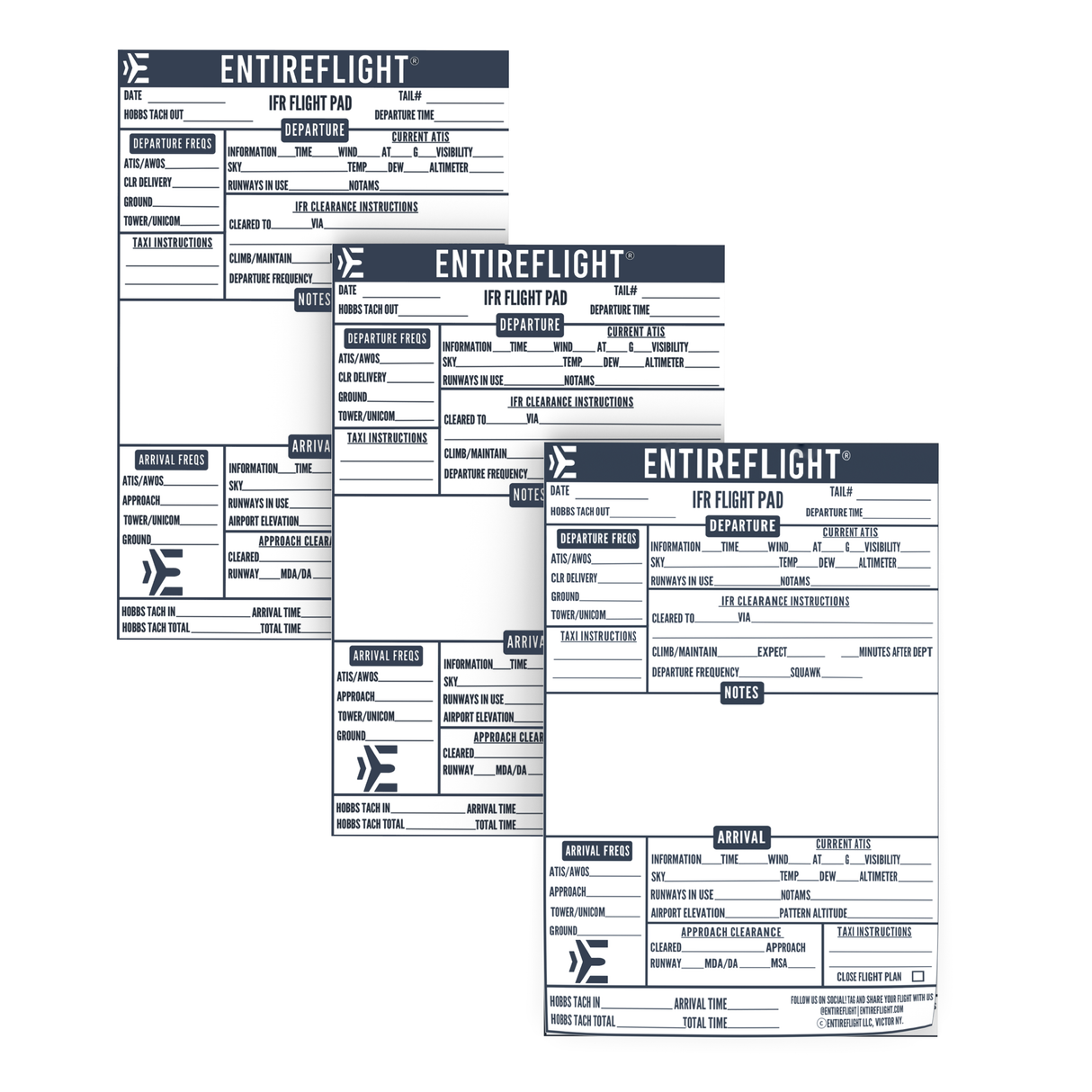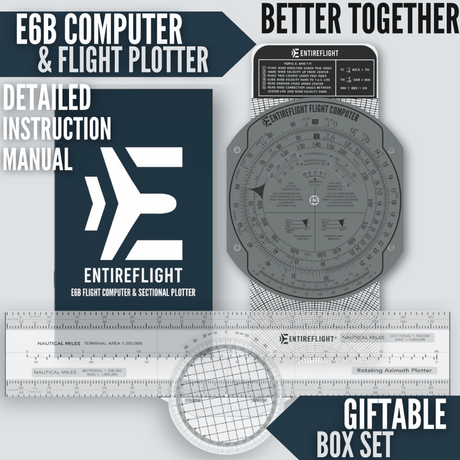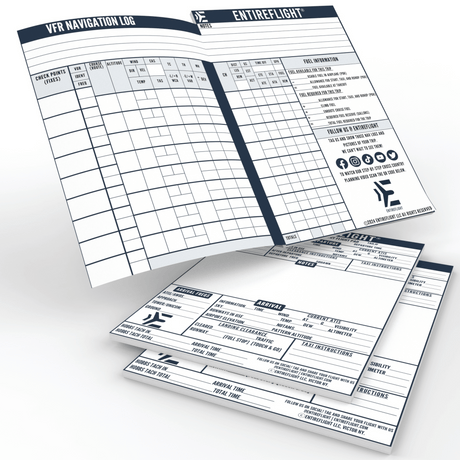Class D Airspace Defined and Decoded: Everything You Need To Know
If you've ever looked up at the sky and imagined it as a vast, unregulated expanse, think again! The sky, much like the roads we drive on, is organized into virtual highways and zones. One such zone every new pilot must master is Class D Airspace, typically found around smaller airports with control towers.
Class D Airspace might seem a bit complex at first, with its unique rules, ways of communicating, and operational procedures. But don't worry, once you break it down, it's not as daunting as it first appears. Mastering it can make your flights safer, more efficient, and more enjoyable.
In this blog post, we're pulling back the curtain on Class D Airspace, making it easy for beginners to understand. We'll talk about what sets it apart, why certain rules exist, how to communicate within it, and we'll even take you through some typical flight scenarios. This guide is perfect for beginner pilots, student aviators, and anyone interested in learning more about the fascinating world above us.
So, get ready for a fun and informative journey as we simplify the complexities of Class D Airspace for you. By the end of this guide, you'll feel more confident, better informed, and ready to navigate the skies with ease. Let's start this adventure, one airspace at a time!
Key Takeaways
- Class D airspace is a specific classification of controlled airspace designed to ensure safe separation between aircraft in the vicinity of smaller airports.
- Pilots must meet minimum requirements, obtain clearance from air traffic control, and follow restrictions and limitations when entering and operating within Class D airspace. These include maintaining radio communication, adhering to altitude limitations, following traffic pattern procedures, and complying with weather minimums.
- When entering Class D airspace, pilots must follow step-by-step radio procedures for clearance and coordination with air traffic control. Takeoff procedures from an airfield within Class D airspace require obtaining clearance before starting the engine, communicating intentions with ATC, performing pre-takeoff checks, and following ATC instructions for taxiing.
- Weather reporting is important in Class D airspace. Pilots need to report significant changes in weather conditions to ATC and stay updated on current weather conditions for accurate reports.
- Effective communication and coordination with air traffic control are essential while operating within Class D airspace. Pilots must establish radio communication before entering this type of controlled airspace and promptly respond to ATC instructions.
What is Class D or Class Delta Airspace?
Class D airspace is a specific classification of controlled airspace that has unique characteristics and requirements for pilots to follow.
Definition and characteristics of Class D airspace
Class D airspace, often associated with smaller airports, serves as one of the key categories within controlled airspace. It is designed to maintain safe separation between aircrafts in its vicinity.
The dimensions of this airspace type are variable, relying heavily on factors like the size and activity level of its paired airport. These areas are marked clearly on aeronautical charts for easy identification by pilots.
An important feature to note about Class D airspace is that operating hours may differ - typically aligning with the operational schedule of their respective airports. To enter this specific zone, a pilot must first establish radio communication and receive clearance from the local control tower, adhering strictly to prescribed procedures and regulations to ensure safety and coordination within these flying boundaries.
How to locate Class D airspace
First, refer to the aeronautical charts. These charts provide detailed information about the different classes of airspace and their boundaries. Look for the specific airport you are interested in, as a Class D airspace is typically found around smaller airports.
Requirements and Restrictions of Class D Airspace
To enter a Class D airspace, pilots must meet the minimum requirements set by the Federal Aviation Administration (FAA) and adhere to certain restrictions and limitations.
Minimum requirements include the following:
- Establishing radio communication with the control tower before entering the airspace.
- Receiving clearance from air traffic control to enter the airspace.
- Following any specific instructions or procedures issued by air traffic control.
- Maintaining clear and accurate communication with air traffic control while operating within Class D airspace.
- Adhering to any altitude restrictions or speed limits that may be in place within the airspace.
- Complying with any other regulations or guidelines set forth by the Federal Aviation Administration (FAA) for flying within Class D airspace.
Restrictions and limitations include:
- Restricted areas: Some Class D airspace may have restricted areas within its boundaries. Pilots must avoid flying into these restricted areas unless they have obtained the necessary clearance.
- Altitude limitations: Class D airspace often has specific altitude limitations that pilots must adhere to while flying within it. It is important to review the aeronautical charts and check for any altitude restrictions before entering Class D airspace.
- Separation requirements: The purpose of Class D airspace is to ensure safe separation of aircraft operating within it. Pilots should maintain a safe distance from other aircraft and follow air traffic control instructions to prevent any potential conflicts.
- Communication requirements: Pilots flying in Class D airspace are required to establish radio communication with the control tower before entering the airspace. They must receive clearance from air traffic control and follow their instructions throughout their time in the area.
- Traffic pattern procedures: Many airports associated with Class D airspace have specific traffic patterns that pilots must follow when arriving or departing from the airport. It is essential for pilots to familiarize themselves with these procedures and adhere to them.
- Weather minimums: There may be specific weather minimums applicable to Class D airspace, particularly during landing and takeoff operations. Pilots should be aware of these requirements and ensure they meet them before entering or operating within this type of airspace.
- Operational hours: Class D airspace may have different operational hours, which often correspond to the airport's schedule of operations. Pilots should verify the operating hours before planning a flight through or into Class D airspace.
- No-fly zones: Certain areas within Class D airspace may be designated as no-fly zones due to safety reasons or special events taking place on the ground. Pilots must heed any temporary flight restrictions (TFRs) issued by air traffic control or federal aviation authorities.
Procedures for entering and operating in Class D Airspace
When entering Class D airspace, follow step-by-step radio procedures and communicate with air traffic control for clearance and coordination.
Step-by-step radio procedures for entering Class D airspace
- Contact the control tower: Establish radio communication by contacting the control tower on the designated frequency. Provide your aircraft identification, location, and intention to enter Class D airspace.
- Request permission: Request clearance from air traffic control to enter Class D airspace. Use clear and concise language when making your request.
- Listen for instructions: Pay close attention to any instructions provided by air traffic control. They may provide specific headings, altitude assignments, or other guidance.
- Follow ATC instructions: Comply with all instructions given by air traffic control promptly and accurately. Failure to follow instructions can jeopardize the safety of your flight and other aircraft in the area.
- Maintain radio communication: Maintain continuous radio communication with air traffic control while operating within Class D airspace. Be prepared to report any changes in altitude, heading, or intentions as requested by ATC.
- Monitor for traffic advisories: Stay vigilant for any traffic advisories provided by air traffic control or other pilots in the area. Report any potential conflicts or sightings immediately to ATC.
- Obtain permission for departure: When preparing to depart from an airport within Class D airspace, contact the control tower and request permission before taxiing onto the runway.
- Departure instructions: Follow any departure instructions given by air traffic control, including assigned headings, altitudes, or routing information.
- Continue monitoring: Even after departing from Class D airspace, continue monitoring the appropriate frequency until you are safely outside of its boundaries.
Takeoff procedures from an airfield within Class D airspace
- Get clearance: Obtain the appropriate clearance from the control tower before starting your engine.
- Call ATC: Communicate your intentions with the air traffic control (ATC) and obtain permission to taxi.
- Follow instructions: Follow any specific instructions given by ATC for taxiing to the designated runway.
- Pre-flight check: Perform a thorough pre - takeoff check of your aircraft, ensuring all systems are functioning properly.
- Full power: Once cleared for takeoff, smoothly apply full power and maintain directional control as you accelerate down the runway.
- Be careful: Rotate at the recommended speed, gently lifting the nose of the aircraft off the ground.
- Maintain stability: Maintain a climb attitude as you ascend, following any altitude or heading instructions provided by ATC.
- Don't break communication: Continue to communicate with ATC as necessary throughout your departure from Class D airspace.
Communication and coordination with air traffic control
When operating in Class D airspace, communication and coordination with air traffic control (ATC) at the airport is essential. Pilots must establish radio communication with the control tower before entering this type of controlled airspace.
ATC will provide clearance for entry and provide instructions to ensure safe separation of aircraft within the airport area. It is important to listen carefully and promptly respond to ATC instructions while flying in Class D airspace.
By maintaining effective communication with ATC, pilots can navigate through this airspace category smoothly and safely.
Weather reporting requirements in Class D airspace
Weather reporting is an important aspect of flying in Class D airspace. Here are the weather reporting requirements that pilots need to be aware of:
- Pilots must report any significant changes in weather conditions to the air traffic control (ATC) within Class D airspace.
- Reports should include information about visibility, cloud cover, precipitation, and any other relevant weather phenomena.
- Pilots should also report any deviations from expected or forecasted weather conditions.
- Weather reports can be made via radio communication with ATC or through Automatic Terminal Information Service (ATIS) broadcasts.
- It is crucial for pilots to stay updated on current weather conditions and make accurate reports to ensure the safety of all aircraft operating within Class D airspace.
Flying in Class D Airspace Worldwide
The airports listed below boast a unique blend of precision and safety, adhering to specific regulations to facilitate controlled and efficient flights. From bustling international hubs to regional gems, each airport on this list showcases the significance of Class D airspace in orchestrating seamless air traffic:
1. John F. Kennedy International Airport (JFK) - Located in New York, USA, JFK is a major international airport with Class D airspace surrounding it. It serves as a gateway for flights to and from various destinations worldwide.
2. London City Airport (LCY) - Situated in the heart of London, UK, LCY is another example of an airport with Class D airspace. Despite its smaller size compared to other London airports, LCY handles numerous domestic and European flights daily.
3. San Diego International Airport (SAN) - Located in California, USA, SAN is a busy Class D airport handling both domestic and international flights to and from Southern California.
4. Nice Côte d'Azur Airport (NCE) - Situated in Nice, France, NCE is an important Class D airport serving the French Riviera and accommodating a mix of commercial and general aviation traffic.
5.Melbourne International Airport (MLB) - Located in Florida, USA, MLB is a regional airport with Class D airspace, providing essential air transportation services for passengers and cargo in the area.
Please note that airspace classifications and boundaries can change, so it's always essential to check the latest information from official sources before flying in or near Class D airspace.
Navigating Class D Airspace: A Must-Know for General Aviation Pilots
Overall, understanding Class D airspace is essential for pilots, especially those flying in the general aviation sector. By familiarizing themselves with the requirements and restrictions of this type of airspace, pilots can ensure safe operations and compliance with air traffic control regulations.
Remember to always stay informed about any changes or updates to Class D airspace procedures to maintain a high level of situational awareness during your flights. Stay safe and happy flying!
FAQs
Q: What is Class D airspace and why is it important for pilots to be knowledgeable about it?
A: Class D airspace refers to a designated area of airspace surrounding an airport that has specific rules and regulations for aircraft operation. Pilots must know this because they need to understand the communication requirements, entry procedures, and traffic pattern guidelines when flying in or near these areas.
Q: How can I determine if I am entering Class D airspace during a flight?
A: By consulting charts such as sectional charts or terminal area charts, which provide detailed information about the boundaries and dimensions of different airspaces. Additionally, air traffic control (ATC) will typically advise pilots of their position relative to the boundaries of the area.
Q: What are the communication requirements when operating in Class D airspace?
A: Pilots are required to establish two-way radio communication with the appropriate ATC facility before entering the controlled area. They must also adhere to any instructions or clearances given by ATC.
Q: Are there any special considerations or procedures for departing or arriving at an airport located within Class D airspace?
A: Yes, there may be specific departure and arrival procedures that need to be followed when operating at airports located within Class D airspace. These procedures could include reporting points, altitude restrictions, sequencing instructions from ATC, and complying with noise abatement procedures if applicable. Pilots should consult published information like Aeronautical Information Manual (AIM) or NOTAMs for guidance on these procedures.






















